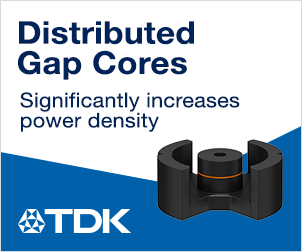The EV industry applauded the inclusion of a plan to fund charging infrastructure in the Infrastructure Investment and Jobs Act (IIJA)—now rechristened the Bipartisan Infrastructure Bill (BIB)—that President Biden signed into law in November. However, until now we didn’t know exactly what we were cheering for.
Now the administration has released an EV Charging Action Plan to outline the steps federal agencies will take to implement the new policy.
The DOE and DOT will establish a Joint Office of Energy and Transportation, which will collect input and guidance from industry leaders, manufacturers, workers and other stakeholders. The initial focus will be on “building a convenient, reliable public charging network…with a focus on filling gaps in rural, disadvantaged, and hard-to-reach locations.”
The administration has set a goal of deploying 500,000 chargers. According to DOE data, the US currently has around 43,000 public charging stations and 120,000 charging ports, mostly Level 2 chargers.
At this stage, there’s still a lot about the plan that’s unclear. The names and acronyms associated with the various programs to be established seem to be in flux, and terms such as “network” and “equity” are being tossed around with no precise definitions given. Based on the administration’s announcements, the following is what we understand to be the deal.
The Bipartisan Infrastructure Bill establishes two separate programs, and two separate pots of money, to promote deployment of EV charging infrastructure.
The National Electric Vehicle Formula Program will provide $5 billion in “formula funding” for states to use “to build a national charging network.”
The Charging and Fueling Infrastructure grant program will provide $2.5 billion for “communities and corridors” through a competitive grant program to “ensure that charger deployment meets administration priorities such as supporting rural charging, improving local air quality and increasing EV charging access in disadvantaged communities.” According to the Federal Highway Administration, these grants can also be used for hydrogen, propane and natural gas fueling stations.
In addition to the Joint Office of Energy and Transportation, the DOT and DOE will launch a new Advisory Committee on Electric Vehicles, and plans to appoint members to this committee by the end of the first quarter of 2022. Interested stakeholders can submit suggestions or comments through the DOT’s Charging Request for Information.
The administration is already developing the standards described in the BIB. No later than February 11, the DOT will publish guidance for states and cities to “strategically deploy EV charging stations to build out a national network along our nation’s highway system.” No later than May 13, DOT will publish standards for EV chargers in the national network to ensure functionality, safety and accessibility.
Charging infrastructure is only part of the plan. Another key component of the administration’s EV strategy is “to increase domestic manufacturing of EV batteries and components and advance environmentally responsible domestic sourcing and recycling of critical minerals.”
In June, the administration released 100-day reviews of the supply chains of four critical products, including batteries and critical minerals and materials, and made dozens of recommendations across federal agencies for how to secure a reliable and sustainable domestic supply chain for batteries.
The Federal Consortium for Advanced Batteries released a 10-year, “whole-of-government plan” to urgently develop a domestic battery supply chain. The DOE Loan Programs Office (LPO) published new guidance for approximately $17 billion in loan authority under the Advanced Technology Vehicles Manufacturing Loan Program (ATVM) to support the domestic battery supply chain. The DOE’s Federal Energy Management Program (FEMP) launched a new effort to support deployment of energy storage projects by federal agencies.
The Bipartisan Infrastructure Law includes $3 billion in competitive grants for battery minerals and refined materials aimed at accelerating the development of the North American battery supply chain, and another $3 billion in grants aimed at promoting manufacturing of batteries and components (such as cathodes, anodes and electrolytes), and to establish recycling facilities in the US.
The act also includes funds to promote R&D for recycling projects, and efforts to cooperate with retailers and state and local governments to increase the collection of spent batteries for reuse and recycling (a good idea that recycling pioneer JB Straubel suggested a few months ago).
These all sound like worthy efforts, and it’s plain that the administration has been listening to some smart people about the comprehensive approach that will be needed to build a viable EV ecosystem.
However, as we all pop open the Champagne and link arms to sing We Shall Overcome, let’s please pause to consider the challenges ahead. The wheels of government investment grind slowly (to be fair, corporate wheels seldom roll much faster), and it may be a couple of years before the first Bipartisan Infrastructure is ready to charge an actual vehicle. By then, the political atmosphere in Washington is likely to be far less EV-friendly, as it already is in half the nation’s state houses. Some of the money will surely find its way to projects that aren’t directly related to EV charging [cough-cough—hydrogen], and a substantial amount may end up in the coffers of oil companies, which are ramping up their acquisitions of companies in the EV infrastructure field. Utilities are already positioning themselves to angle for a large slice of the pie, and not all EV advocates trust their intentions [cough-cough—monopolies].
We could say more, but that’s enough bah-humbug for now. Let’s enjoy the shiny electric Christmas tree the Biden Administration has planted, and work as hard as we can to keep it green in the years ahead.
Sources: The White House, Federal Highway Administration, Electrek
